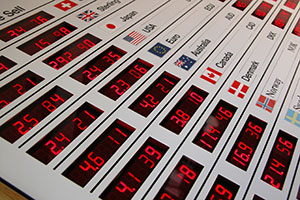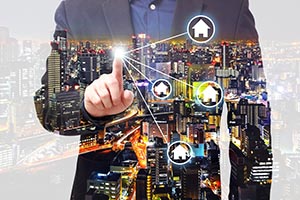COVID-19 changed customer expectations well beyond the private sector. In particular, it impacted citizen preferences for making government payments. Learn how electronic bill presentment and payment (EBPP) changed government banking.
State and municipal governments faced some of the same challenges as private businesses when COVID-19 swept through the nation. Buildings shut down and employees set up remote offices, yet citizens still needed their government services. And just like private businesses, some government entities were better positioned to service consumers and process payments in the new environment than others.
For some, providing services online and over the phone only required minimal adjustments – especially if they had a robust website and already accepted digital payments. For others, simply processing paper payments created major challenges, scanning checks or using a digital lockbox to make deposits while reconciling and reporting manually.
Yet that effort became necessary because people changed their habits. Even when lockdowns ended, people moved away from crowded places and toward contactless payments.
“Why wait in line to renew your license when you can handle the paperwork and pay online,” says Ryan Busch, product manager for Digital Receivables at U.S. Bank. “We’ve seen the volume of online payments shoot up across the board.”
Now, just like the stores and restaurants that risk losing customers by not adding offering curbside pickup or contact-free delivery, government agencies that don’t add online services risk losing citizen satisfaction.
From “in line” payments to online ebills
For state and local governments, the most comprehensive solution to citizens’ desire to move from “in line” to “online” is electronic bill presentment and payment (EBPP). As the name suggests, EBPP systems provide end-to-end support throughout the bill pay process, including alerts and communication, self-service options, multiple payment methods (including ACH and credit cards) and multiple communication channels (from phone to computer to text).
These full-service websites are made for managing regular, periodic billing, like utilities payments, but are also ideal for individual transactions, like tax payments, or online license transactions – including pets licenses, hunting fees or motor vehicle registration.
The consumer benefits of an EBPP seem obvious:
- Contactless – Access information and payment with the click of a mouse instead of waiting in line.
- Efficiency – Save the commute to and from the payment center.
- Reliability – Digital payment allows quick visibility to the payment process rather than waiting for confirmation that a mailed payment has been processed.
- Satisfaction – Paying when and how they want improves citizen engagement.
Benefits of an EBPP for public sector banking
In addition to improving citizen satisfaction, full-service digital billing and payment systems also create cost and operational efficiencies at a time that government entities are facing declining budgets.
“Updating how you process payments is a win-win for both government agencies and citizens. It can reduce operational costs and help you do more with less,” Busch says. “Less time spent by staff responding to inbound payment inquiries by phone and email. Less balancing and reconciling. And reporting will become more automated, which also helps free up staff to work on other activities and projects that benefit the public. You can even encourage timely payer behavior with integrated communications and reminders.”












